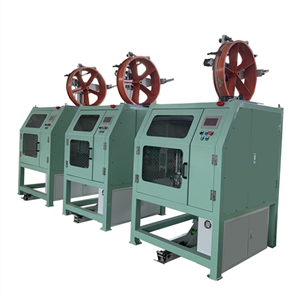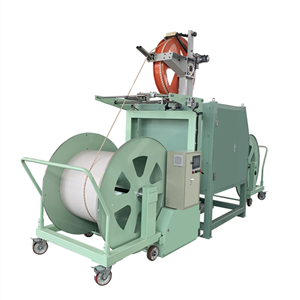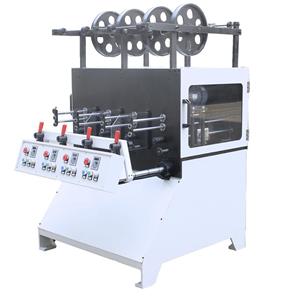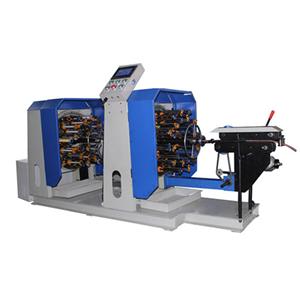Automatic Wire and Cable Braiding Machine
Introduction to Automatic Wire and Cable Braiding Machines
In the modern industrial landscape, efficiency and precision in manufacturing processes are paramount. Among these processes, the production of wires and cables stands out as critical, given their ubiquitous use in various sectors including electronics, automotive, and telecommunications. The Automatic Wire and Cable Braiding Machine represents a significant advancement in this area, combining sophisticated technology with robust design to meet the demands of contemporary wire and cable production.
Understanding Wire and Cable Braiding
Wire and cable braiding involves the interweaving of metallic or non-metallic strands to form a cohesive and flexible assembly. This technique not only enhances the mechanical strength and flexibility of the cables but also improves their resistance to environmental factors like abrasion and corrosion. Traditionally, this process required considerable manual effort and was fraught with inefficiencies.
Technological Innovations in Braiding
The advent of automation in wire and cable braiding has transformed this landscape dramatically. Automatic braiding machines employ cutting-edge technology to ensure precise and consistent braiding, which is essential for high-quality cable production. These machines are equipped with features such as automatic wire handling, tension control, and sophisticated programming capabilities that allow for the production of a wide range of cable types without sacrificing quality.
Key Features of the Automatic Wire and Cable Braiding Machine
Automatic Wire Handling
One of the standout features of the Automatic Wire and Cable Braiding Machine is its fully automated wire handling system. This system includes mechanisms for automatic wire winding, releasing, and arranging, which collectively enhance operational efficiency. The automation reduces the likelihood of human error and ensures that the wires are handled with precision throughout the production process.
Versatile Application
The machine's versatility is another critical aspect. It is adept at handling various types of wires and cables, such as high-temperature wires, headphone wires, shielded cables, control cables, USB data cables, electric iron wires, and steel braided cables. This versatility makes the machine an invaluable asset in factories that produce a diverse range of products.
Labor and Cost Efficiency
Automation in wire and cable braiding significantly reduces the need for manual labor. By streamlining complex braiding processes, the machine allows manufacturers to allocate their workforce to other critical areas, thereby enhancing overall productivity and reducing labor costs. Moreover, the speed and consistency provided by automation lead to higher throughput, further amplifying cost-effectiveness.
Enhanced Performance
The machine is equipped with advanced mechanisms designed to ensure precise wire braiding. These include programmable controllers and servo motors that adjust the braiding density and tension, ensuring that each cable meets strict quality standards. Such precision is crucial for the production of cables used in sensitive or high-stress applications, such as aerospace or medical equipment.
Robust Construction
Designed for continuous operation in demanding production environments, the Automatic Wire and Cable Braiding Machine boasts a robust construction. Its components are typically made from high-grade materials resistant to wear and tear, ensuring long-term reliability and reducing maintenance requirements.
Benefits of Using an Automatic Braiding Machine
The implementation of an automatic braiding machine in wire and cable production facilities brings numerous benefits:
Increased Production Speeds: Automated braiding significantly speeds up the production process, allowing manufacturers to meet large orders more efficiently.
Consistent Quality: The precision of automatic braiding ensures that every batch of cables is of uniform quality, which is critical for maintaining customer trust and satisfaction.
Scalability: With automation, scaling up production to meet market demands becomes more feasible, as the same equipment can handle increased outputs without a drop in quality.
Reduced Waste: Precision in manufacturing leads to reduced material waste, which is not only cost-effective but also better for the environment.
Safety: Automation reduces the need for direct human interaction with the machinery, thereby lowering the risk of workplace injuries.




